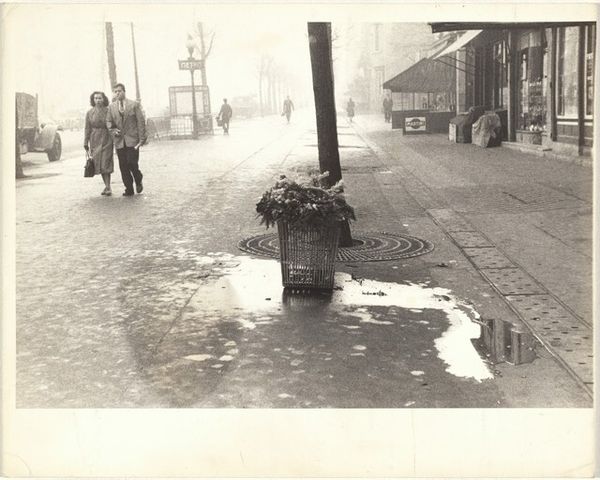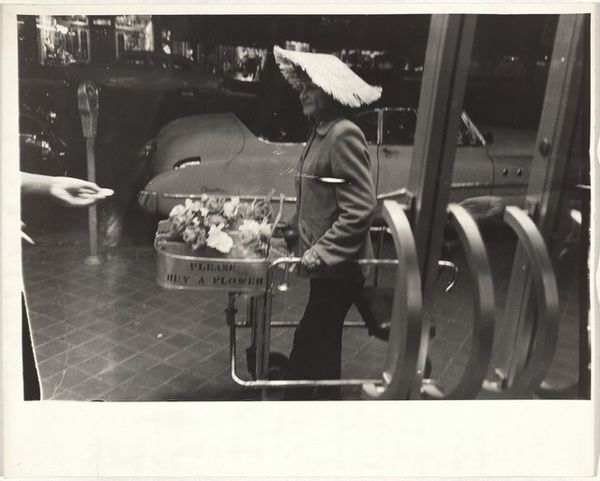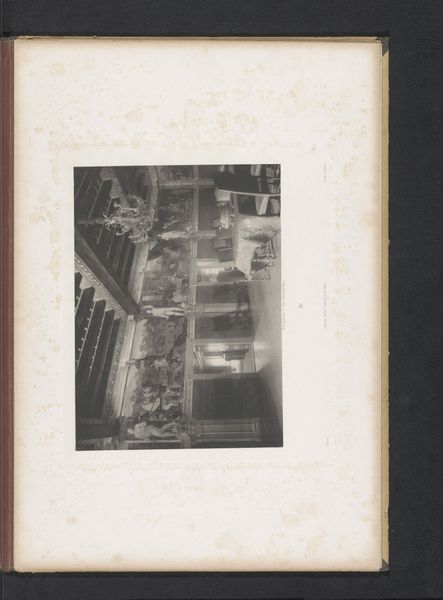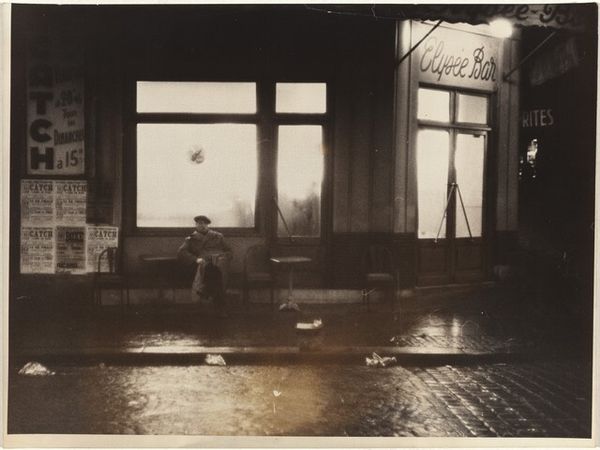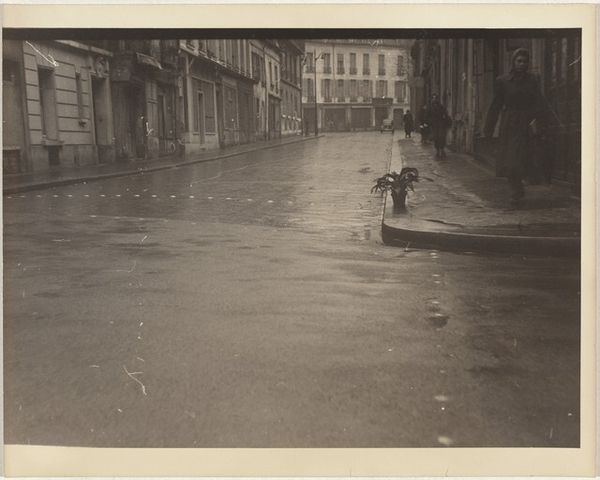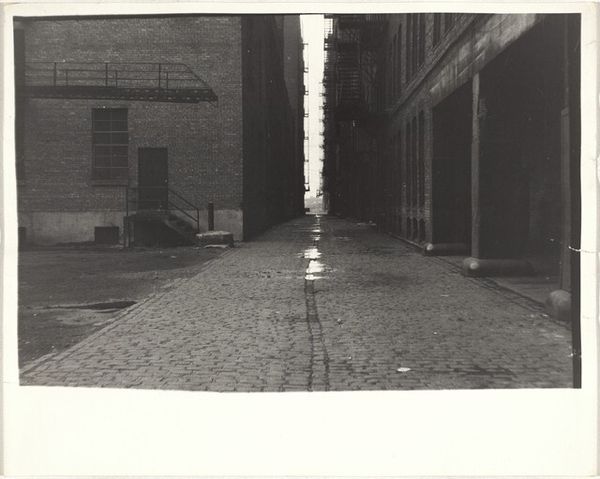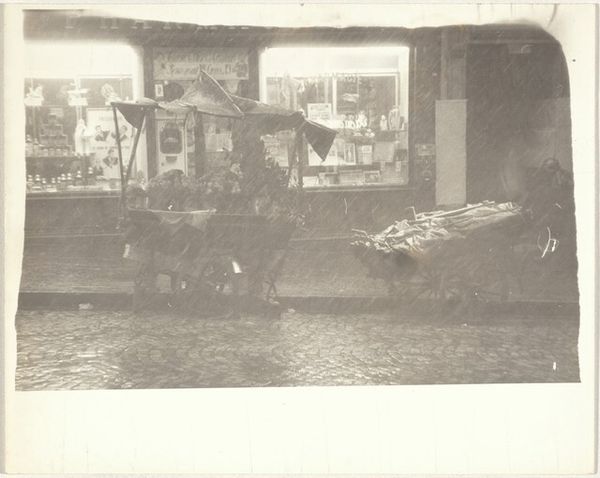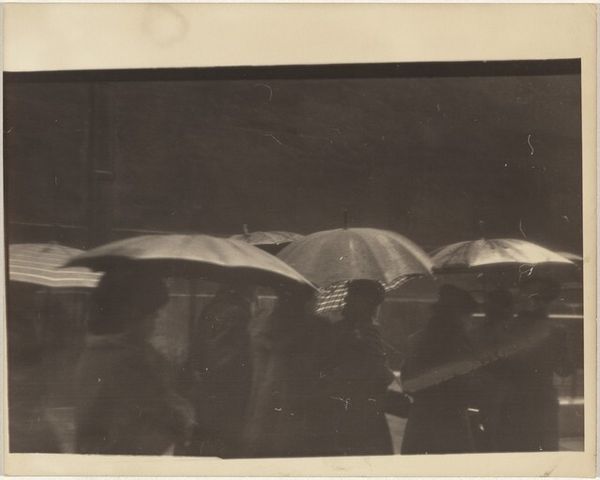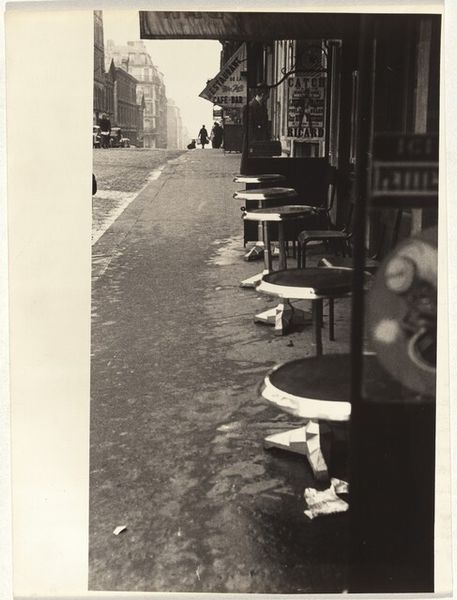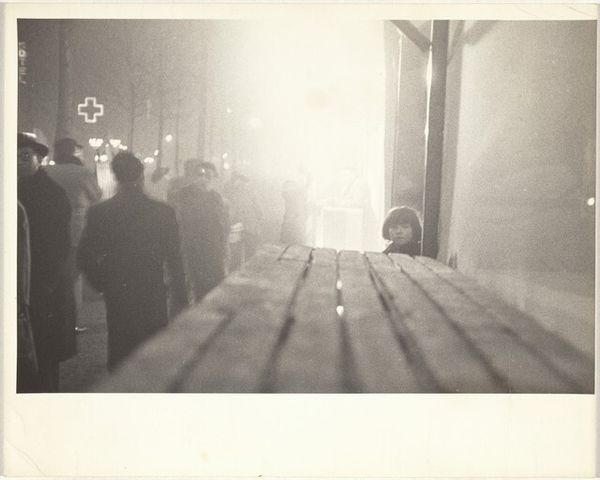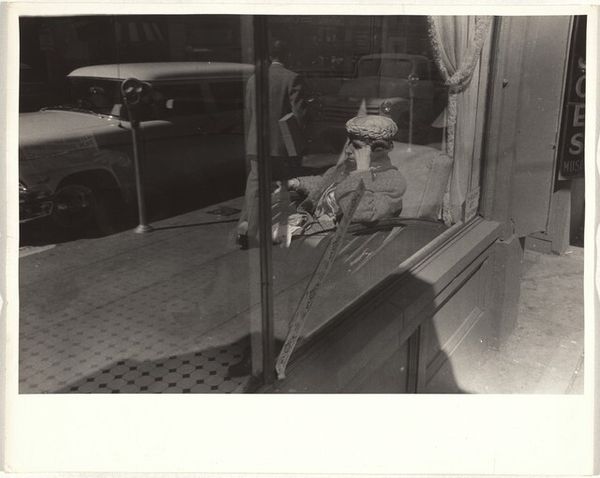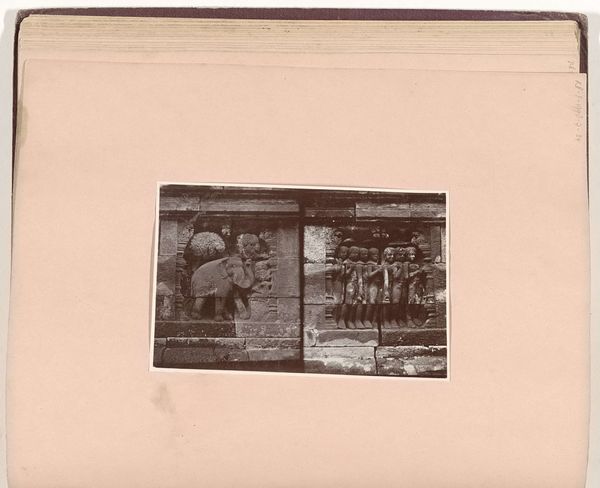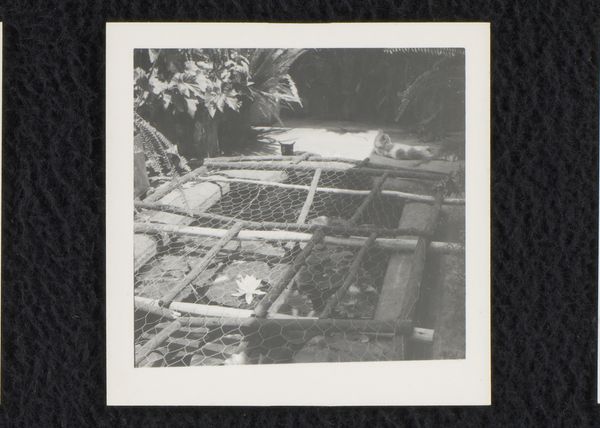
print, photography
#
print photography
# print
#
landscape
#
street-photography
#
photography
#
realism
Dimensions: sheet: 20.2 x 25.2 cm (7 15/16 x 9 15/16 in.)
Copyright: National Gallery of Art: CC0 1.0
Curator: Robert Frank's “Street Vendors, Paris,” from 1951, captures a slice of life in the city. Editor: My first impression is of dampness and a kind of blurred motion, despite the stillness of the image. The high contrast and shallow depth of field add to that fleeting, almost dreamlike quality. Curator: Notice how the wicker baskets overflowing with flowers act as signifiers of urban commerce. They tell a story of fleeting beauty juxtaposed with the grit of the city, almost as offerings. The street becomes a stage, a marketplace of transience. Editor: Yes, but observe how Frank uses the stark, almost brutal contrast to emphasize the textures. The reflections on the wet cobblestones, the rough weave of the baskets, the delicate paper wrapping the blooms… each surface has a distinct tonal value, creating a complex interplay of light and shadow. Curator: I see it as an intersection of societal symbols. The street, the vendors, the flowers – they converge to reflect the psychological state of postwar Europe. It mirrors anxieties, but also resilience. Editor: While I acknowledge that historical reading, I'm more compelled by Frank's structural decisions. The composition, with its tilted perspective and deliberate blurring, challenges traditional notions of photographic realism. The flowers, though beautiful, are almost secondary to the abstract play of forms and light. Curator: It's almost like Frank wanted to make it iconic. A photograph as a visual memory of the street vendors and the ephemeral nature of urban existence, like trying to capture a scent. Editor: Exactly. And it's within that tension between representation and abstraction that Frank's mastery truly shines through, challenging the viewer to find meaning in the aesthetic experience itself. Curator: Thinking about this photograph now, I am moved by how it uses its subject to invite empathy, a meditation on life itself. Editor: I’m left admiring how such seemingly simple structural tools become the vehicle for communicating this quiet power, using shapes, lines, and tones to suggest its social and political relevance.
Comments
No comments
Be the first to comment and join the conversation on the ultimate creative platform.
